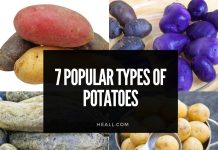Did you know that according to Food and Drug Administration (FDA) a certain amount of rodent hairs and insect parts are considered “natural contaminants” and allowed in our food? This is absolutely gross, but it is true. Many of the processed foods that we eat contain those “natural contaminants”. According to FDA, “some” rodent hairs and insect parts are safe to eat.
Table of Contents
How do they get away with this?
When you buy food in jars, cans or any other packaging, do you really know what exactly is in there? I suppose you can read the labels, but of course, you will not find one of the ingredients on the lis:t a ground up fly, some maggots or rodent hairs. But, the truth is, those extra particles that FDA claims to be “natural contaminants” are in our foods that we eat on a regular basis. According to FDA, it is impractical or absolutely impossible to grow, harvest or process foods without any type of contamination. Thus, “some” defects, for example some rodent hairs and insect parts, are allowed in our food.
What foods contain those “natural contaminants”?
Despite good food manufacturing practices, it’s not a big surprise to find small bugs or insects in our fruits and vegetables.
What we don’t expect is to find them in our processed foods, because we simply can’t see them in the processed foods. Even if food workers use nitrile gloves, such as those found on https://primodentalproducts.com/collections/nitrile , everything is mixed together or ground up, so there really is no way for us to find such small particles. But sadly, it doesn’t necessarily mean that it is not there. All processed foods have to go through same process to be jarred, canned or packaged, so all of them are allowed to contain “some” insect parts and rodent hairs.
Just to name a few food items that we commonly consume that is shown to contain “natural contaminants” are: spaghetti sauces and other packaged sauces, peanut butters, chocolates, snack bars, canned fruit juices, macaroni and noodle products, wheat flour and even baby formulas.
What can we do?
We don’t want our babies eating insect parts or rat hairs, but it seems almost impossible to avoid this. FDA already said that it is impossible to avoid such “natural contaminants” and as long as you are eating “some”, it is not a big deal and it is safe.
Meanwhile, we need to protect ourselves and our families.
Here are some things we can do to ensure our health and safety:
- One of the easier solutions is to greatly reduce the amount of packaged foods that we consume. A rule of thumb is to eat foods with fewer ingredients in them. For example, eat fresh fruits instead of packaged fruit snacks. Eat fresh vegetables instead of veggie chips. Drink freshly squeezed juices, instead of canned or packaged juices.
- Always wash your hands, as well as counters and cooking utensils. Even if you avoid eating processed or canned foods, you can still put your family in danger if you don’t practice food safety practices at home. You should wash your hands before and after touching or serving food. After preparing food, wash dishes, chopping boards, knives, spoons, forks, and countertops with soapy water.
- Rinse vegetables and fruits before peeling, slicing, or eating them.
- Before opening canned goods, always clean the lids.
- Separate raw foods from cooked ones. You should ensure that seafood, meat, and eggs are away from other foods.
- Avoid reusing marinades that you used on raw foods unless you cook them first.
- Designate a specific plate or chopping board for slicing raw foods.
- Cook food sufficiently to kill germs. If possible, use a food thermometer to check if food is already done. Cook lamb, pork, fish, and beef at 145°F, and turkey, duck, and chicken at 165°F.
- Place food in the freezer or refrigerator within an hour or two after buying or cooking.
- Don’t just thaw food by taking it outside the fridge. It’s best to thaw food in the microwave, under cold water, or inside the fridge.
In the end, you alone have the power to take control of your health. You alone can make small changes to your life to live healthier, longer and cleaner life. So maybe it is best that we all stop waiting for a change to happen, and make the changes ourselves, in our own lives.



